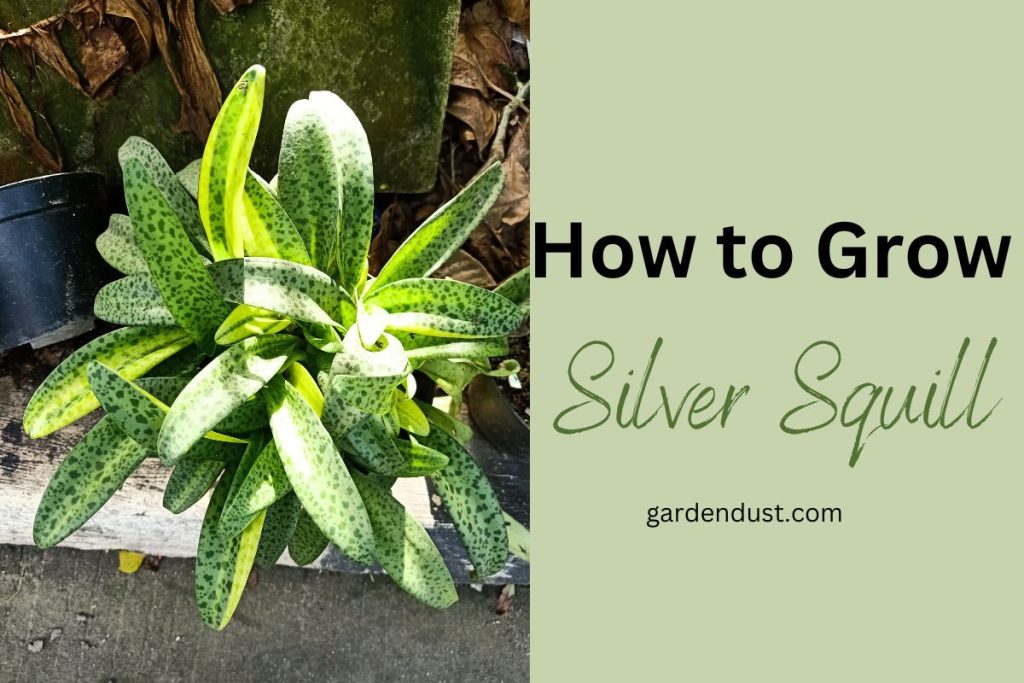Silver Squill (Ledebouria socialis), also known as the Leopard Lily or Wood Hyacinth, is a charming and unique indoor plant that has gained popularity among plant enthusiasts. Its distinctive silver-green foliage, dotted with dark spots, adds an elegant touch to any living space. Native to South Africa, this resilient plant is relatively easy to care for, making it an excellent choice for both beginners and experienced gardeners. In this comprehensive guide, we’ll delve into the details of How to Grow and Care for Silver Squill, ensuring that you can enjoy its beauty to the fullest. Let’s begin…
Botanical Name-Ledebouria socialis
Common Name-Silver Squill, Leopard Lily, Wood Hyacinth
Family-Asparagaceae
Native- South Africa
Genus-Ledebouria
Plant Type-Perennial bulbous plant
Plant Size-Height of 6 to 8 inches (15 to 20 cm) , spread of about 6 inches (15 cm)
Flower Colour– shades of pink, purple, or white
Blooming Season– late winter to early spring
Growing And Caring Guidelines-
Choosing the Right Pot and Soil
The first step in successfully growing Silver Squill is selecting an appropriate pot and soil. Use a well-draining pot with drainage holes to prevent waterlogging, as this plant is susceptible to root rot in overly wet conditions. A mix of cactus or succulent potting soil and perlite or sand provides the ideal balance of aeration and moisture retention.
READ ALSO:-HOW TO GROW BLUE SPUR FLOWERS
Planting Silver Squill
When planting Silver Squill bulbs, place them approximately 1 to 2 inches deep in the soil. Ensure that the bulbs are planted with the pointed ends facing up. You can plant multiple bulbs in the same pot, allowing for a more visually appealing display as they grow and multiply.
Light Requirements
Silver Squill thrives in bright, indirect light. While it can tolerate some direct sunlight, prolonged exposure to harsh sunlight can scorch its delicate foliage. Place the plant near a window with filtered sunlight or provide artificial light using fluorescent or LED grow lights. Rotate the pot occasionally to ensure even growth on all sides of the plant.
Temperature and Humidity
Maintain a consistent temperature range between 60°F to 80°F (15°C to 27°C) for optimal Silver Squill growth. This plant is relatively adaptable to varying humidity levels but prefers a moderate to high humidity environment. In drier conditions, consider using a humidity tray or a room humidifier to create a more suitable microclimate.
Watering Silver Squill
One of the critical aspects of Silver Squill care is proper watering. Allow the top inch of soil to dry out before watering, and then water thoroughly, ensuring that excess water drains out. Avoid overwatering, as this can lead to root rot. During the plant’s dormant period in late fall to winter, reduce watering frequency to mimic its natural growth cycle.
Fertilizing
Feed your Silver Squill with a balanced, water-soluble fertilizer diluted to half strength every 4-6 weeks during the growing season (spring and summer). Refrain from fertilizing during the dormant period. A well-balanced fertilizer with equal proportions of nitrogen, phosphorus, and potassium will support overall plant health and encourage blooming.
Pruning and Deadheading
Silver Squill doesn’t require extensive pruning, but removing yellow or damaged leaves can enhance its appearance. Deadheading, or removing spent flowers, encourages the plant to focus its energy on producing new growth and blooms. Trim the flower stems at the base once the flowers have faded.
Propagation of Silver Squill
Silver Squill readily produces offsets or bulbils that can be separated and planted to propagate new plants. Gently remove the offsets when they are large enough to handle, and plant them in a separate pot using well-draining soil. Keep the soil consistently moist until the new plants establish roots.
Common Pests and Diseases
While Silver Squill is generally resistant to pests, it can occasionally be affected by spider mites or mealybugs. Inspect the plant regularly, and if pests are present, treat them with insecticidal soap or neem oil. Ensure good air circulation to discourage the development of fungal diseases.
Repotting of Silver Squill
Silver Squill doesn’t require frequent repotting, but it’s beneficial to refresh the soil every 2-3 years. Repot in the spring, carefully lifting the plant from its current container, gently separating bulbs if needed, and placing them in a slightly larger pot with fresh soil. Ensure the roots are intact and healthy during the process.
Care in During Dormancy
In late fall to winter, Silver Squill enters a dormant period characterized by reduced growth. During this time, gradually reduce watering to allow the soil to dry out between waterings. Keep the plant in a cooler location, ideally around 50°F to 60°F (10°C to 15°C). Resume regular care and watering when new growth emerges in spring.
Growing and caring for Silver Squill can be a rewarding experience, thanks to its captivating appearance and undemanding nature. By providing the right conditions in terms of light, soil, and water, you can enjoy a thriving indoor garden adorned with the unique charm of this remarkable plant. Whether you’re a novice gardener or a seasoned plant enthusiast, Silver Squill is sure to add a touch of elegance to your home. Happy Gardening…







